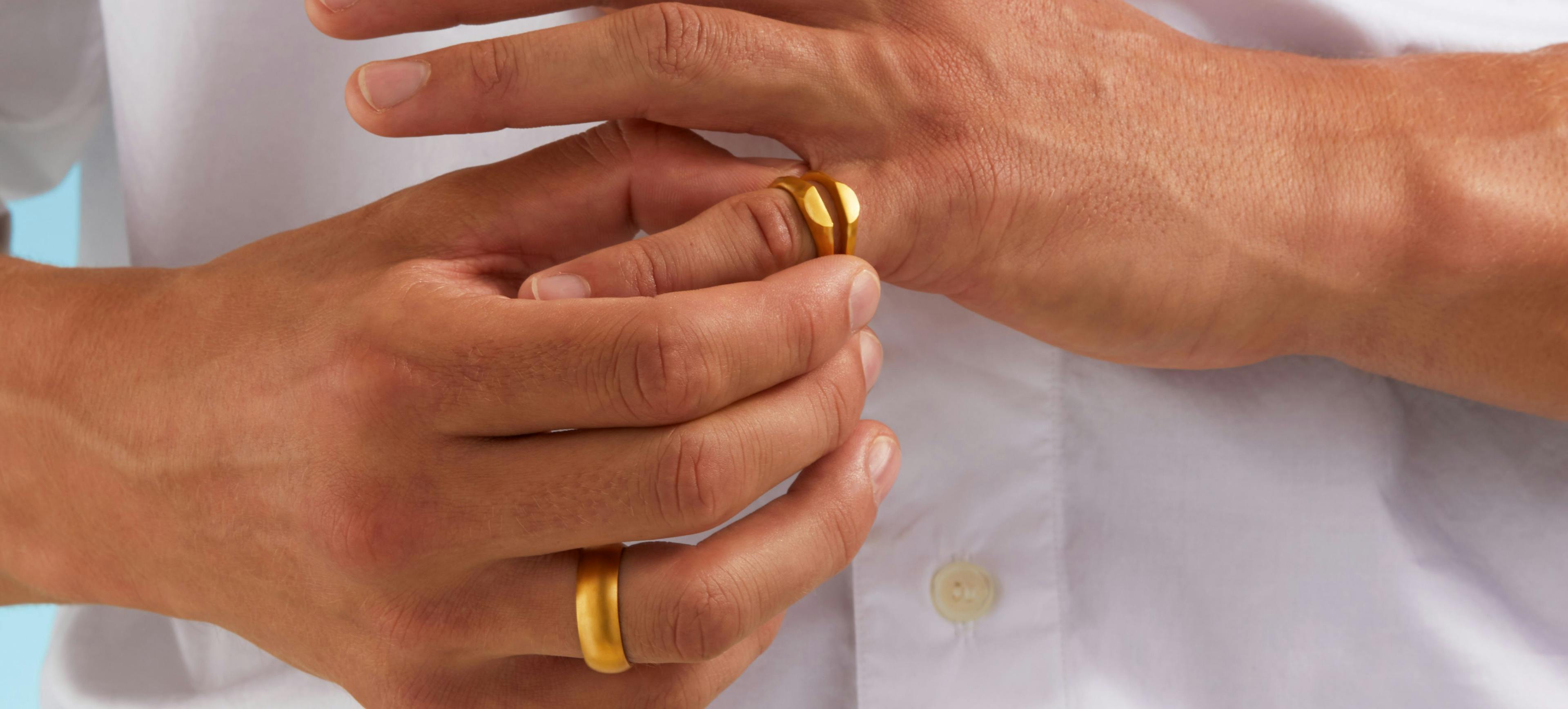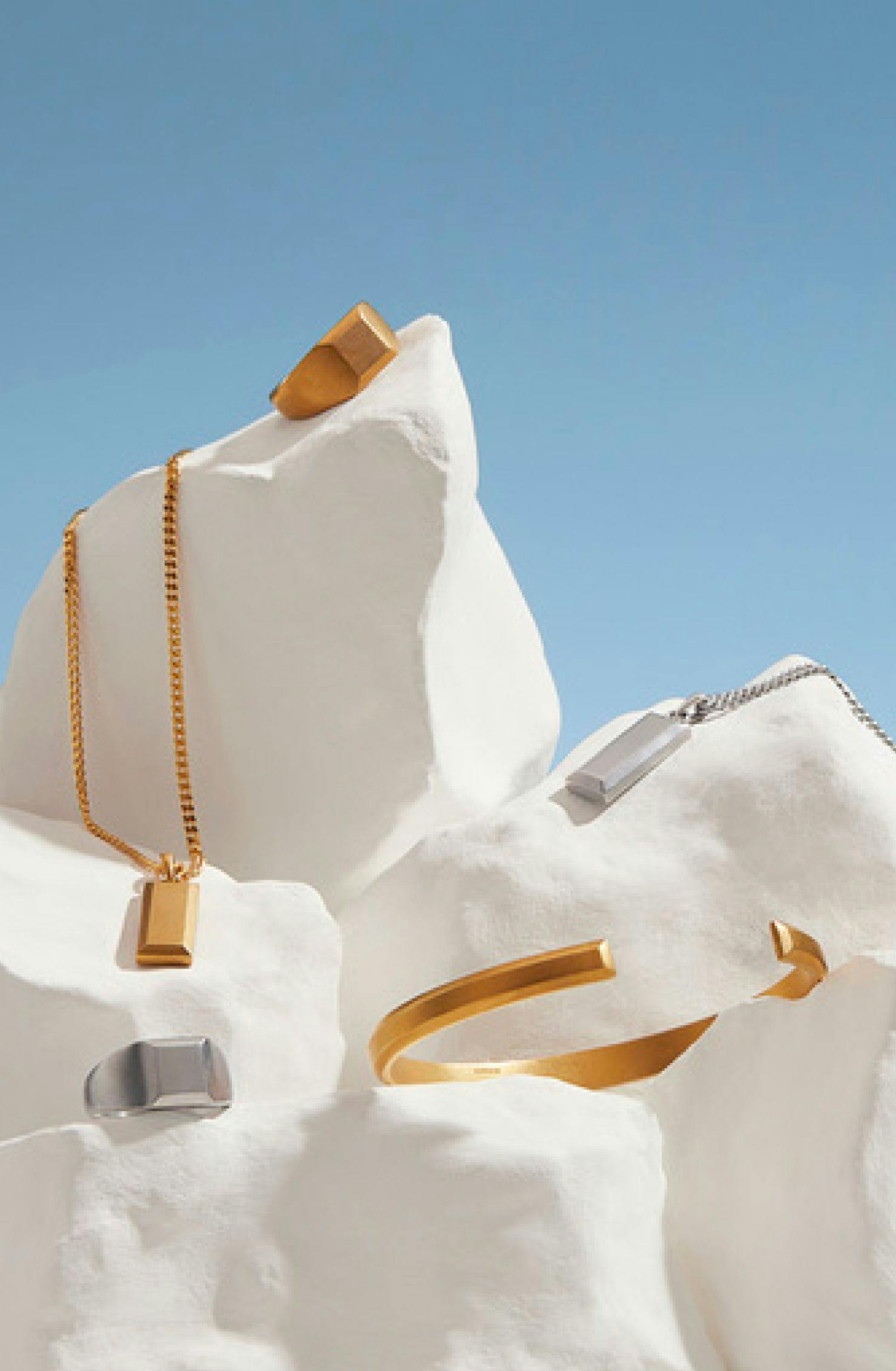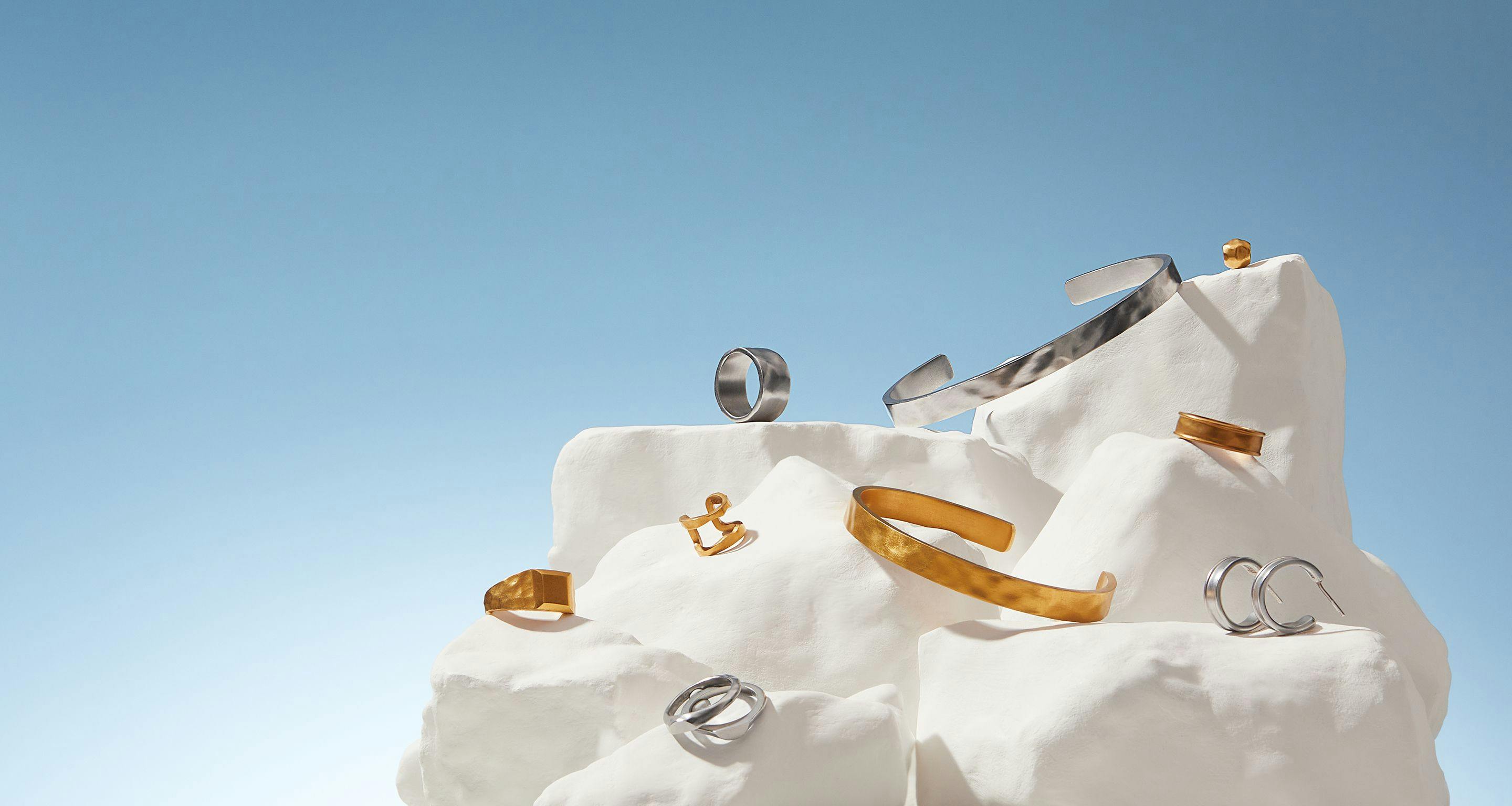-
How to Remove and Avoid Scratches from Your Gold and Platinum Jewellery
Due to the delicate nature of gold, avoiding scratches is always an important concern for those wearing jewellery made from the precious metal.
The higher in quality a piece of gold jewellery is – i.e. the closer to 24 karat – the more prone the item will be to nicks and scratches. This softness is synonymous with pure 24-karat gold and is an inherent part of owning 24-karat gold jewellery.
Lesser-karat items of gold jewellery will usually be harder, because they are alloyed with other (cheaper) metals.
Platinum, on the other hand, is far more durable than its golden counterpart but is still susceptible to scratches over time. Although far more resistant to marking, platinum will develop a natural patina.
Platinum’s tough structure also results in its unique ability to maintain its mass. Even when scratched, platinum will mould like putty instead of chipping off. This unique attribute means you don’t have to be concerned about your pure platinum piece shedding its mass and, therefore, its value.
The techniques and advice we provide in this article should help owners of 24-karat gold and pure platinum best maintain their jewellery items. A small amount of simple polishing care once a month could be all that’s stopping you from enjoying your pieces far into the future.
Knowing how to remove scratches from jewellery is a handy skill to have up your sleeve. So, let’s explore your options for polishing your gold and platinum jewellery and keeping it free of scratches.
Polishing Your Jewellery at Home
The easiest way to polish your gold and platinum jewellery is to buff them at home using a polishing cloth, which you can buy at most stores.
You should note here that this method can help you polish out only very light platinum or gold scratches. If the scratches on your jewellery run a bit deeper, it is better to have it polished by a professional. Likewise, if your item of gold or platinum jewellery has numerous scratches, it is also best to have it polished by a professional.
Before using a polishing cloth on your jewellery, always make sure your jewellery is clean. You do this by wiping your jewellery with a damp cloth dipped in soapy water.
After you've cleaned and dried your piece, you can begin wiping it with the polishing cloth to shine it. If your jewellery houses gemstones, do not rub them with the polishing cloth, as you could potentially damage or displace them.
Professional Jewellery Polishing
As mentioned above, when dealing with scratched gold or platinum, it’s important to acknowledge when the damage may be beyond your ability to repair. If your gold or platinum jewellery has many scratches, some of which are also deep, it is always best to have it polished by a professional.
A professional jeweller’s polishing fee usually runs to approximately £25 per item for yellow gold and £40 per item for platinum. Jewellers use polishing materials that are more abrasive than your regular polishing cloth, which is why professional buffing will always be more effective than anything you can manage on your own at home.
There are, unfortunately, also downsides with professional polishing. One of the inevitable downsides of polishing gold jewellery is that the process involves removing a tiny layer off the piece's surface so that it can become even once more. For this reason, too many polishing sessions can wear down your gold jewellery, and even weaken it.
The more frequently this happens, the further your piece will depreciate. Unfortunately, the piece will slowly shed more of its gold mass with each polish. You can easily avoid this happening with a little routine, discipline, and diligence by polishing your jewellery items at home.
How Often to Polish Jewellery
Knowing how to remove scratches from gold can help alleviate the concerns for any owners of gold jewellery. Because of the abrasive nature of polishing, you shouldn't simply go to your jeweller to have your pieces buffed every time you notice a couple of visible scratches. In general - and for the reasons we spoke about above, you shouldn't have your gold jewellery polished more often than once or twice a year.
If you don't wear your rings or other jewellery every day, polishing them once every two or three years may also work well for you. It's best to not have your jewellery polished until it is scratched extensively.
As for buffing your pieces with a polishing cloth: This you can do more often, as these cloths are nowhere near as abrasive. Doing this once a month or once every two to three months is an acceptable frequency for polishing of this nature. Maintaining a regular polishing schedule at home could save you visits to the jeweller down the track, thus extending the overall lifespan of your jewellery items. If you have several items of jewellery, you can even take care of them all at once - you can make a monthly cleaning ritual out of it!
How to Avoid Scratches on Jewellery
Scratches on gold can be an absolute nightmare for owners of gold jewellery. For this reason, you should always protect your gold pieces from knicks and bumps to avoid scratches.
To assist you with this, we’ve included the following list of suggestions that you may find useful:
-
If you're worried about scratches, choose pieces that will be less exposed to the risk of damage (e.g. necklaces or pendants)
-
Wear your less-durable pieces less frequently
-
Remove your jewellery before doing any particularly physical activities which may cause scratching (such as cooking, gardening, or cleaning)
-
Store your jewellery in a safe place where it cannot get scratched (such as in a soft pouch inside a jewellery box)
-
Be particularly careful with delicate gemstones, as they are even more susceptible to scratches
-
Avoid contact between different pieces of jewellery, as they may scratch one other
-
Avoid wearing several pieces of jewellery at the same time, as this can also lead to scratching between the pieces
-
Always make sure your jewellery is adequately secure before wearing it, as a loose ring or bracelet is more likely to get scratched
So there you have it; you can now own your gold or platinum jewellery with a greater peace of mind knowing that you’re able to better maintain and take care of it.
The measures listed above – albeit quite simple – will best ensure that you enjoy your precious gold or platinum jewellery for many years to come. Regular polishing at home will result in fewer trips to the jeweller for professional polishing, which will extend your precious jewellery's lifespan.
And what better way to invest in gold or platinum jewellery than through our exquisite and bespoke 24-karat gold or pure platinum collections?
Our unique lines of jewellery provide the perfect way to make an investment in gold or platinum which will stand the test of time and look fantastic when you choose to wear it out.
Opt to make a modern investment in pure, high-quality jewellery that’s bound to garner attention from those around you. By owning 24-karat gold or pure platinum, you’ll know that your item of jewellery is worth exactly its weight in whatever the current trading value is for your jewellery’s respective metal.
Instead of investing in antiquated and clunky gold coins or bullions, you can make the ultimate investment of the new age through stunning 24-karat gold or pure platinum jewellery.







